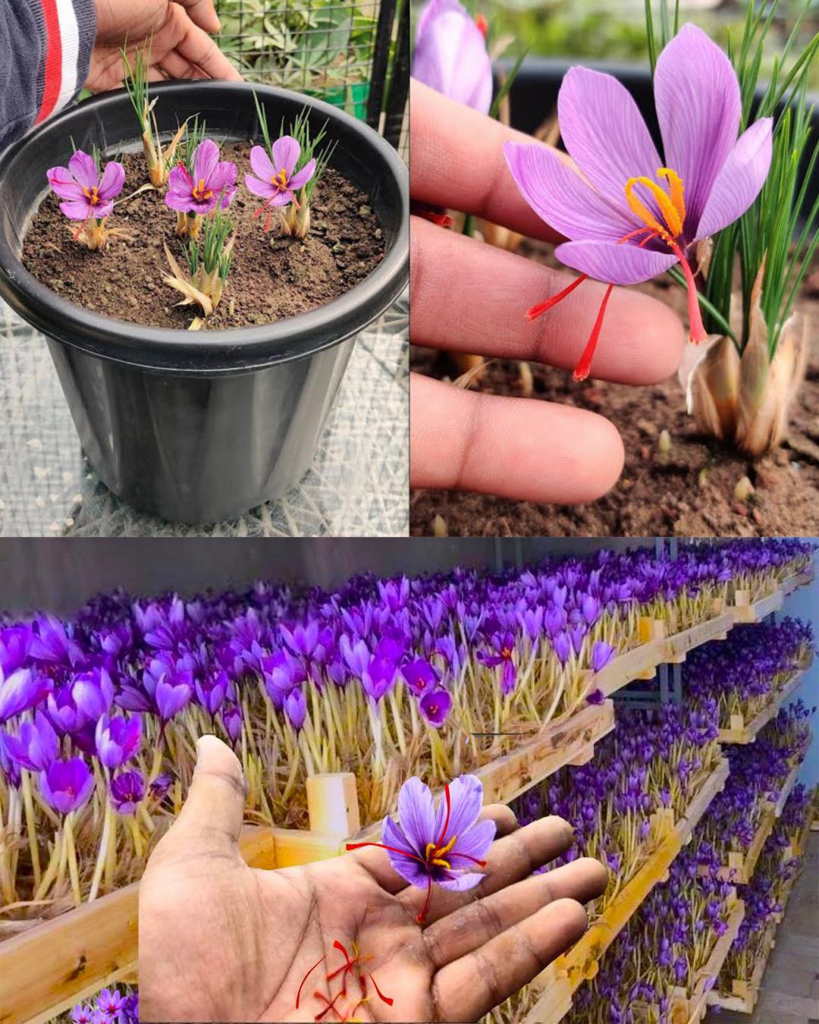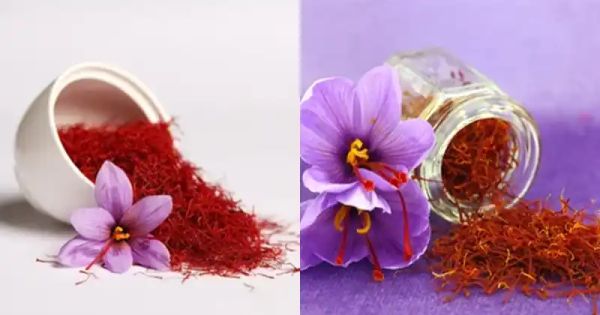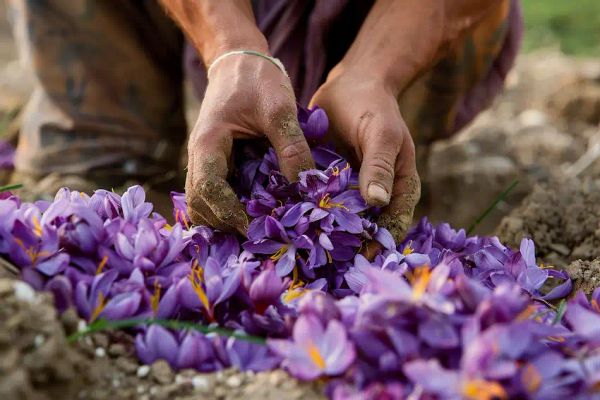Did you know that you can grow saffron, the highly valued spice, right at home? Even if you have limited space, you can still experience the joy of cultivating this vibrant spice. Let’s explore how to grow saffron in containers and enjoy the unique rewards it brings.

Choosing the Right Containers
The first step in your saffron gardening journey is to select the right container. Opt for a well-draining pot that is at least 6 inches deep and 8-12 inches in diameter. Terracotta or breathable fabric pots are ideal as they promote uniform soil drying and prevent root rot. Remember to ensure that your pots have adequate drainage holes.
Soil and Planting
Saffron bulbs, also known as corms, thrive in loose, nutrient-rich soil with excellent drainage. A mix of two parts potting soil to one part coarse sand or perlite provides the perfect texture and drainage. Plant the corms about 4 inches deep with the pointy end facing upwards, spacing them approximately 3 inches apart. Late summer or early fall is the best time to plant saffron corms, allowing them to settle in before cooler temperatures arrive.
Location and Climate

Find a sunny spot for your containers, preferably one that receives at least 6-8 hours of sunlight daily. Saffron plants are fairly drought-tolerant and prefer full sun. However, in extremely hot climates, providing some afternoon shade can prevent soil overheating. If you live in colder regions, you can move the containers indoors or to a frost-free environment during winter.
Watering and Feeding
Water the corms sparingly. Prior to sprouting, keep the soil slightly moist. As green shoots appear, increase watering, but always allow the soil to dry out between waterings to prevent bulb rot. Support your saffron plants’ growth and bloom by feeding them with a balanced, slow-release fertilizer at the beginning of the growing season.
Harvesting Saffron
Saffron flowers bloom once a year, usually in the fall, over a 1-2 week period. Each flower produces three red stigmas, which are the saffron spice. Harvest the stigmas on the same day the flowers open, using tweezers. Dry them on a paper towel away from direct sunlight and store the dried saffron in an airtight container, preserving its flavor and color.

Care Throughout the Year
After the blooming period, the saffron plant will start to yellow and die back. This is a natural process, so reduce watering to a minimum during the dormant phase. In colder climates, consider moving the pots indoors or to a sheltered area until the next season. Each year, repot the corms and refresh the soil to prevent overcrowding and provide essential nutrients.
Growing saffron in containers is a delightful and rewarding endeavor. It adds an exotic touch to your home gardening projects and allows you to experience one of the world’s most precious spices firsthand. Embrace the process with patience and care, and witness your saffron crocuses flourish. Feel free to personalize this guide based on your local climate conditions and personal experience. Happy saffron gardening!




